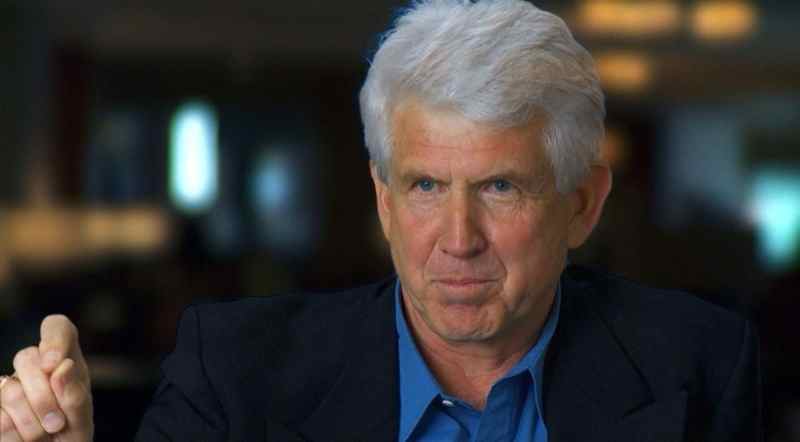Ethernet for the Ages: A Discussion with Bob Metcalfe
A: Ethernet began as a very high-speed packet-switching local area network (LAN) for extending the Internet into buildings to reach personal computers and their servers. However, Ethernet has been evolving and re-invented for some 40 years, making it so much more than just a networking technology or a means for connecting computers together. At its heart, Ethernet is a brand – an innovation brand.
Brands make promises, so it’s entirely appropriate to ask what promises Ethernet makes…such as the promise of openness, interoperability, and higher speeds at lower costs. Ethernet’s promises also come in the form of open jure standards; owned rather than open source implementations; and fierce competition but interoperability among competing products. It also means preservation and backward compatibility with the installed base and the rapid evolution of IEEE standards based on market engagement. Long live Ethernet!
Q: How did you come up with the idea of Ethernet?
A: While at the Xerox Palo Alto Research Center (PARC), I was given the job of networking buildings full of what were arguably the first personal computers (PCs). I combined concepts like Internet packet switching from the Advanced Research Projects Agency Network (ARPANET) and multi-access randomized retransmission from ALOHAnet. I then asked Dave Boggs and others to help me build the first Ethernet-based networks starting in 1973.
The terminal on my desk at Xerox PARC was communicating at 300bps the day before we installed an Alto PC and Carrier Sense Multiple Access with Collision Detection (CSMA/CD) Ethernet running at 2.94Mbps. It was about 10,000 times faster; we went that fast because we could, and because our new laser printer could consume 20Mbps.
Q: Ethernet seems to be the proverbial “lightning in a bottle”; what do you attribute Ethernet’s success to? How and why did it come to be one of the world’s most disruptive networking and communications technologies?
A: Ethernet was developed in the context of the seven-layer ISO networking reference model. It knows its place at the bottom of the protocol hierarchy; therefore, Ethernet can be very simple. For example, Ethernet carries packets without acknowledgement, assuming they will be handled above, say in TCP/IP.
Ethernet has generally been simpler, faster, and cheaper than its competitors. It has always been as fast as it can practically be, with little regard for current application requirements, so if you build it, they – new applications, that is – will come. Added to that is the decision to make Ethernet an open standard and the creation of IEEE Project 802 to perfect its standardization. It was the perfect recipe for capturing that so-called “lightning in a bottle”.
Ethernet’s competitors were not committed to the idea of open standards or interoperability with their competitors. So Ethernet – fast, cheap, reliable, and interoperable – was able to eventually win the LAN wars that raged throughout the 1980s.
Q: What did you hope to originally accomplish with Ethernet? Did you ever imagine it would grow into the ubiquitous technology that it is today?
A: Our initial motivation for Ethernet was to build our own tools to connect our desktop PCs to the ARPANET and our EARS laser printer. However, these tools escaped us to eventually serve uses we never imagined – for example, YouTube. Now that we are “Gigafying” the Internet, I cannot wait to see what the next big new applications will be. Connectivity is good.
Q: What is the most innovative application you’ve come across that relies on Ethernet?
A: Everything uses Ethernet, so it’s hard to pick one. How about the US F-16 fighter jet?
Q: What’s next for Ethernet? Where might we see the next generation of Ethernet innovation come from? Automotive? Internet of Things? Energy?
A: As it has for the last 40 years, Ethernet continues to evolve, however, there are five key paths for its future. Ethernet is moving up into the LAN to 1Tbps; into WANs and replacing SONET; over the airwaves as Wi-Fi; and down to embedded microcontrollers thanks to standards like IEEE 802.15.4. It is also bridging across the “telechasm” between carrier WANs and customer LANs as Carrier Ethernet via service providers.
Ethernet needs to continue evolving, especially given the Gigafication of the Internet. The Internet reduces market frictions and expands freedom of choice. Ethernet will need to be ready to support coming Internet-driven disruptions, particularly in areas like energy, education, and healthcare.Bottom of Form
Q: Is there anything you’d do different with Ethernet, now knowing what you know?
A: I would not have described Ethernet’s multi-access packet contention as “collisions.” Buyers too often thought wrongly that Ethernet collisions were like breaking glass and bent metal. There are still people today who are forced to use Ethernet but complain about it being “non-deterministic” because of those damn collisions. There has not been a reported Ethernet collision in decades.
